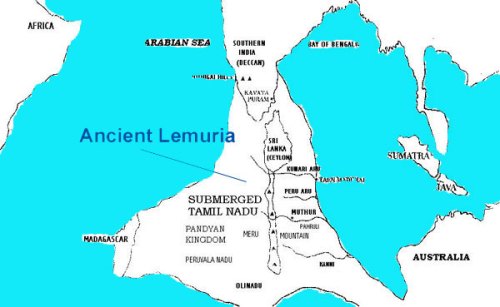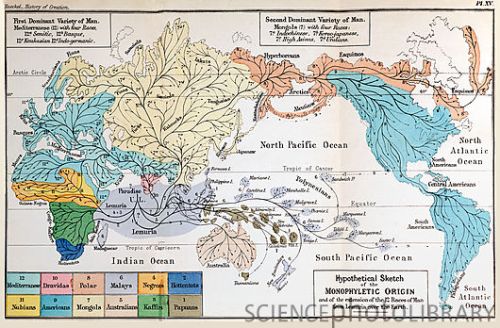Thanjai Nalankilli
TAMIL TRIBUNE, April 2001 (ID.2001-04-03)
Definitions:
Hindians: People whose mother tongue is Hindi; much of Uttar Pradesh, Madya Pradesh and some surrounding areas in northern India is their homeland. Hindian politicians control and dominate the Indian government because they form the single largest block in the Indian parliament.
Outline
1. Background
2. A Brief Biography of Raja Raja Cholan
3. The Reason Why?
A Note about Names
The three ruling dynasties of old Tamil Nadu are written and pronounced in Tamil as Cheran, Cholan and Pandian (or Cherar, Cholar and Pandiar) but most English writers write them as Chera, Chola and Pandia. We may use it interchangeably. (Cholan is sometimes spelled as Chozhan. Pandian is also sometimes spelled as Pandyan or Pandiyan).
1. Background
Emperor Raja Raja Cholan built the Thanjai Big Temple (also referred to as Thanjavur Peria Koil or Tanjore Big Temple) almost a thousand years ago; it took 4 years of construction and was dedicated in1010 AD. Why is his statue not allowed in the temple grounds and is standing on a public street further away from the view of the thousands of visitors to the temple? We are not talking about installing the statue inside the temple but within the outer walls of the temple where visitors can see it. There are other structures within the outer wall. In fact, we see a statue of Raja Rajan and his queen Ko-perum-thevi in the Tiruvisalur temple. This statue was there well before there was an Indian Government. But, alas, the Indian Government would not permit the statue of this great Tamil emperor to be installed on the grounds of the temple he built.
Some two decades ago the Tamil Nadu State government commissioned a statue of the Emperor and intended to place it within the outer walls of the Thanjai Big Temple. The Indian Government told the Tamil Nadu Government that it would not allow the statue inside the temple grounds. So the latter placed it in a nearby street. The outcome is, the many thousands of devotees and tourists who visit the temple do not see the statue.
You may wonder why the Tamil Nadu Government has to get Indian Government’s permission to install the statue of a Tamil emperor within the outer walls of a Tamil Temple built by the Tamil Emperor on Tamil soil with Tamil money and labor? Indian Government decided, without any consultation with the Tamil Nadu Government, that it would take over the major temples in Tamil Nadu. Now nothing significant can be done without the consent of Hindians who control and dominate the Indian parliament.
2. A Brief Biography of Raja Raja Cholan
Who is this Raja Raja Cholan (more precisely, Raja Raja Cholan-I)? Readers who are fans of the popular Tamil novelist Kalki may be familiar with his historical novel “Ponniyin Selvan“. That novel is woven around the life of Raja Raja Cholan, also known an Arunmoli. Of course, much of the novel and many of the characters in it are fiction although that fiction is wrapped around historical events. What we present in this section are historical facts taken from such authoritative works as Dr. M. Rajamanickam’s “Cholar Varalaru”, Nilakanta Sastri’s “The Cholas” and T. V. Sadasiva Pandarathar’s “History of the Later Cholas”.

Raja Rajan reigned between 985 AD and 1014 AD. It can be rightly said that the Second Golden Age of Tamil Nadu started with his reign and continued for another two centuries. (The First Golden Age of Tamil Nadu in known Tamil history was in the days of the Third Tamil Academy (Third Tamil Sangam)). He built one of the most glorious empires of South Asia that peaked during the regin of his son Rajendra Cholan – I and continued for another 200 years or so under his sons, grandsons and great grandsons. He was not only a great warrior king in the tradition of Cheran Senguttuvan, Cholan Karikalan and Pandian Nedunchezhian, he was also an able administrator, a patron of the arts and a devote Saivaite Hindu.
During that period, Sinhala kings from Ilankai (now known as Sri Lanka and Ceylon) had the habit of interfering in Tamil Nadu by allying with one Tamil king against another, usually allying with Cheras or Pandias against the Cholas. (Of course, the blame should rightly be put on those Tamil kings who invited foreign interference and not on the Sinhala kings who made use of the opportunity.) So, after decisively defeating the Cheras and Pandias, Raja Rajan Cholan turned his attention to the Sinhalese King Mahinda-V. He assembled a naval armada and sent it to Sri Lanka. The Chola Navy defeated King Mahinda. After the military victory Raja Rajan built a Hindu temple there in Polonnaruva.
Having defeated the enemy in the south, he moved north. The Chola army under the command of Crown Prince Rajendran marched north, all the way up to what is now Bijapur. The army defeated all who opposed its march north, including the powerful army of Chalukya Emperor Satyasraya who ruled the Deccans.
As noted before, Raja Rajan’s legacy is not just wars and conquests. He is remembered today primarily for the construction of the Tanjore Big Temple (Thanjavur Peria Koil). The temple is also called “Rajarajeswaram” after him. This Saivaite Hindu temple is one of the most beautiful and magnificent architectural monuments in South Asia. The magnificent tower and the delicate sculptures are truly a feast for the eyes. Not only Hindus from all over the world, but also tourists from around the world visit this temple.
Though Raja Rajan was a devote Saivaite Hindu, he respected other religions. He built Vishnu temples in Mysore after he conquered the region. He not only permitted Silendra Emperor Srimara Vijayottunga Varman to build the Buddhist shrine Chudamanivihara in Tamil Nadu at Nagapattinam, he also contributed money for its construction.
Many arts – sculpture, painting, drama, dance and music – flourished during his time. He conduccted a survey of his kingdom and is considered a major achievement of that time. He divided the kingdom into a number of administrative units and appointed administrative officers for each unit. Villages were governed by local elders (a type of self-government). According to Dr. M. Rajamanickam, Raja Rajan’s administrative structure is comparable to modern administrative structure seen around the world.
Raja Raja Cholan is truly one of the greatest rulers in Tamil history. This is in fact the reason why Hindi politicians who dominate and control the Indian Government refuse permission to install his statue within the outside walls of Thanjai Big Temple that he built. Let me elaborate.
3. The Reason Why?
Why do the Hindi politicians who control the Indian Government refuse permission to install Emperor Raja Raja Cholan’s statue within the outer walls of the Thanjai Big Temple?
Many thousands of Hindu devotees and tourists from around the world visit the Thanjai Big Temple. If Raja Rajan’s statue is installed on the temple grounds for all to see, they may ask the others and tour guides about him and will come to know of his conquests, his majesty and the glorious days of the Second Golden Age of Tamil Nadu. The Hindian controlled Indian Government does not want people to know about this glorious past and the great kings of Tamil Nadu who are second to none. Hindian politicians and elite want people to think that all the glorious past of Indian history is centered on the Hindi heartland of today. They want to hide and put under a blanket all other histories, be it that of Andhra Pradesh, Assam, Bengal, Karnataka, Kerala or Tamil Nadu, for example.
Read the history books used at schools under the jurisdiction of the Indian Government (Central Schools and schools accredited under the Central Board of Secondary Education (CBSE)). You will read in detail about the kings and emperors who ruled from what is today the Hindi heartland, for example, Chandra Guptan, Ashokan, Akbar, et al. But you will not read anything about the Tamil kings or the Bengali kings or the Assamese kings, etc. In the Indian history according to Hindians, these lands do not have a glorious history worth mentioning although, in truth, every one of these nations has a rich past. Refusal to grant permission to install the statue of one of the greatest emperors of South Asia on the grounds of the temple he built is just another attempt by the Hindian politicians to hide the glorious past of the Tamil people.
(NOTE: Emperor Raja Raja Cholan is not the only one whose history the Indian Government wants to hide. About two decades ago, the then Indian Prime Minister Indira Gandhi tried to distort the history of Emperor Rajendra Cholan’s conquest of the Ganges Plains (today’s Hindi land). I published an article about it in the Tamil magazine “Thamizh Nilam” a decade ago.)












